Antennaria plantaginifolia
The more common pussytoes with spatula-shaped leaves
Antennaria plantaginifolia plantain-leaf pussytoes
This little native plant is easily overlooked. The plantain-leaved pussytoes is about 6-inch high and is widely distributed in dry woods, fields, rocky places and pastures throughout Eastern United States. Distribution, though, is spotty. It is, however documented in most of the counties of the state, except the north-western corner. It seems to prefer acidic soils, but otherwise does well in soils of poor quality where competition from other species may be less vigorous.
This species is a member of the large aster family and thus has composite flowers. It is named pussytoes because it has a flower cluster that resembles the pad on the underside of a cat's foot. The flowers consist of a ¼ inch white inflorescence, sometimes tinged with pink. The flower has several disk florets but no ray florets and so do not resemble other asters very closely. Male and female flowers are found on different plants with male flowers generally growing on plants with shorter stalks. Female flowers tend to look fuzzy because of the abundance of flowers with pistils. Both types of flowers have green floral bracts beneath the flower head. Male flowers tend to be rare and female flowers can often produce fertile seeds without the benefit of pollen. Authorities disagree on the method of pollination - some say it is by wind and others by insects. There is no floral scent.
Blooming occurs April through June, depending on location. The seeds are small and have tufts of hair for wind distribution. There is a basal rosette of spoon-shaped, soft-green leaves that tend to be woolly below and sometimes on top. The leaves have 3-7 main veins. There are also several stem leaves.
Colonies sometimes form when the plant sends out horizontal stems called stolons. It is also known as woman's tobacco, everlasting, and mouse ear. It is sometimes grown in native plant gardens, though its need for precise soil conditions makes this tricky. The plaintain-leaf pussytoes is one of at least 6 related species of this highly variable plant found in northeastern and north-central United States that differ mostly in the form of the leaves and the number of veins in the leaves. Some botanists claim there are up to 32 species.
Habitat & Range
Grows in dry woods, rocky soils, and field margins. Prefers sun to partial shade and acidic, well-drained soils.
Present throughout the state, except the very north, and the north-west corner.
Range: Found throughout Eastern United States, distribution is spotty.
Wetland code: Not classified
Phenology
Flowers April through June. Blooms for 2 to 3 weeks.
Fruits in late late spring to early summer.
Characteristics
Inflorescence terminal flat-to-round cluster of crowded flowerheads
Flowers dioecious, surrounded by green floral bracts; ¼–½" across
Pistillate flowers fluffy pink-white disk-florets resembling a cat’s paw, appearing so due to the abundance of styles
Staminate flowers rounded white disk-florets with tubular brown/orange stamens protruding from the cente
Basal leaves simple, in a rosette, spoon-shaped (obovate, oblong or suborbicular); 3 to 7 veins; with whitish wooly hairs; on long petioles; ½ -1½ ″ long
Stem leaves alternate, clasping, linear to lanceolate; shorter and woolier than basal leaves;upper leaves terminated by a sharp, slender tip
Flowering stems (peduncles) erect, green, sometimes with reddish tint; covered in white dense hairs; pistillate stems up to 12″ while staminate stems up to 8″
True stems (stolons) extend from base of basal leaf clumps and root at the nodes
Fruit a single brown, seed-like fruit (cypsela) with small tufts of white hair
Height avg. 4-6”, rarely up to 9-10”
Plant Codes
S-rank: S5 (Secure)
G-rank: G5 (Secure)
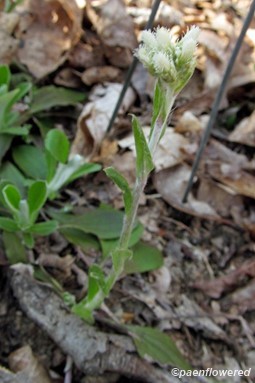
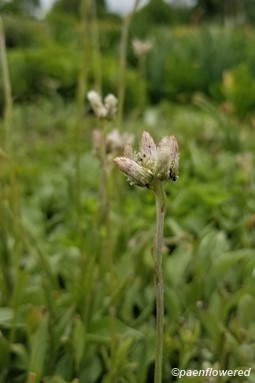
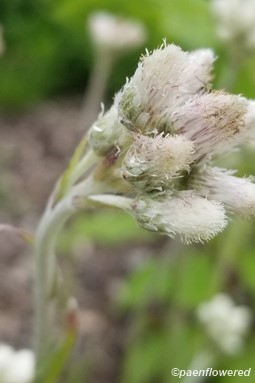
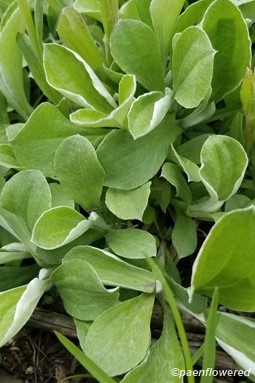
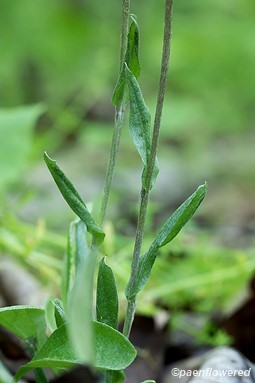
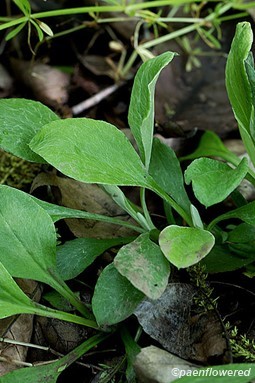
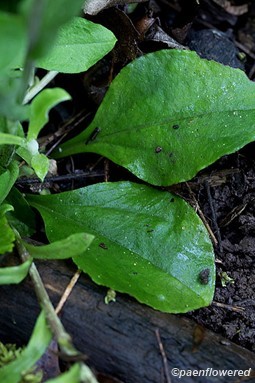
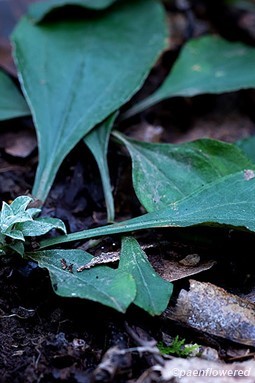



Comments
Have you spotted this plant in your area? We'd love to hear about your experience! Share your comments or questions about the plant below. Comments are moderated before posting.